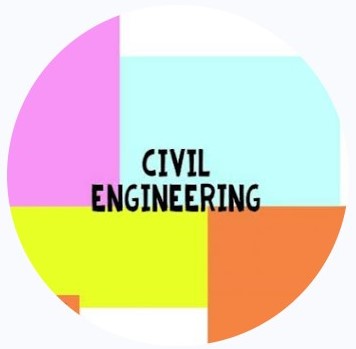
Ban Ahmed Khaleel
Research InterestsCivil Engineering
construction material
Structural reliability
Green Concrete
Modern construction technology
Structure analysis and design
| Gender | FEMALE |
|---|---|
| Place of Work | Technical Engineering College/ Mosul |
| Qualification | Master |
| Speciality | structure |
| banahmed@ntu.edu.iq | |
| Phone | 0 |
| Address | Mosul/Iraq, Mosul, Mosul, Iraq |
Academic Qualification
Bachelor
Oct 1, 2000 - Jul 1, 2004Mosul University-IRAQ / Bachelor of
Civil Engineering
Master
Sep 10, 2006 - Jun 18, 2009Mosul University-IRAQ / CIVIL ENGINEERING / Master in Structure
Publications
Evolution of ultra high performance concrete using hybrid fibers: a review
Mar 26, 2025Journal Discover Concrete and Cement
publisher Springer Nature
DOI https://doi.org/10.1007/s44416-025-00001-z
Volume 1
Ultra-High Performance Concrete (UHPC) is a modern composite material that combines high strength, durability performance with increased toughness and service life making it suitable for high-performance structural applications in infrastructures. However, the application of UHPC in tensile and dynamic loads makes it brittle and as a result, fibers are essential to enhance its performance. Single fiber systems (metallic or polymeric) have been explored extensively, and for most of them, the mechanical properties and the durability improvements are somewhat unequal. However, to meet this, a relatively new solution known as hybrid fiber systems has gained popularity by combining different types of fibers to improve composite performance. Based on the features of hybrid fibers, this review provides a critical evaluation of the literature on concrete containing UHPC in terms of compressive strength, tensile resistance, flexural toughness, and durability. The Hybrid Fiber Synergy is introduced and discussed to demonstrate that when fibers with different mechanical characteristics, sizes, and roles are placed together, they will work even better. However, some of the drawbacks include the high costs of installation and the lack of convincing long-term results to complement the gains noted. Based on the gap analysis of this review, this section presents directions for future studies and area recommendations for future research with a focus on incorporating hybrid fibers with advanced technologies, such as three-dimensional printing, and machine learning. The results further show the added values of hybrid fibers in promoting UHPC toward more progressive and efficient construction solutions.
Influence of water quality and slag on the development of mechanical properties of self compacting mortar
Mar 7, 2022Journal Materials Today: Proceeding
publisher Elsevier
DOI https://doi.org/10.1016/j.matpr.2022.02.575
Volume 57
Abstract The present research deals with the impact of the quality of water sources as an alternative to tap water on the hardened and fresh characteristics of self-compacting mortar. Laboratory chemical tests were carried out for water samples collected from four sources- non-potable well water, Tigris river water, untreated wastewater from local factories, and tap water. Water from the four sources was used to pour self-compacted mortar specimens in presence of ground granulated blast furnace slag (GGBFS) as pozzolanic materials up to 30% with 10% increment which replaced with cement by weight. Slump flow diameter, V-shape flow time, compressive strength, flexural strength, and water absorption ratio tests were performed for self-compacted mortar specimens. The experimental results showed a slight improvement in slump flow of self-composted mortar mixtures using non-potable well water in the presence of 10% GGBFS. There is a significant improvement in slump flow for mixtures that used Tigris River water as an alternative to tap water. The compressive strength of self-compacted mortar at 7 and 28 days using Tigris river water, in the presence of10%, 20%, and 30% GGBFS were developed better than non-potable well water and untreated wastewater.
The effect of recycled plastic waste polyethylene terephthalate (PET) on characteristics of cement mortar
Aug 1, 2021Journal Journal of Physics: Conference Series
publisher IOP Publishing
DOI 10.1088/1742-6596/1973/1/012121
This paper studied the effect of waste Polyethylene Terephthalate (PET) on the workability and mechanical properties of the produced cement based mortar. However, five different waste PET weight fractions of 0, 5, 15, 25 and 50% were replaced with river sand in cement mortar mixtures with constant cement content and water to cement ratio of 525 kg/m3 and 0.48, respectively. The workability of the mixtures is enhanced by increasing the replacement level of plastic waste PET. On the other hand, the dry density, compressive and flexural strengths were reduced as waste PET incorporation increased except the mix contained 5% of PET which improved the compressive and flexural strengths. As a result of the dry density and compressive strength results, it was determined that the mixture containing 25% waste PET is considered as a lightweight mortar and suitable for structural purposes.
Enhancement of bonding efficiency between overlay and substrate concrete using Styrene-Butadiene Rubber Latex and different surface roughness methods
Jan 27, 2021Journal Engineering and Applied Science Research
publisher Faculty of Engineering, King Mongkut's University of Technology North Bangkok (KMUTNB), Thailand
Volume 48
The present study aims to accurately assess the binding efficiency between the substrate and the overlay using Styrene-Butadiene Rubber Latex (SBR) and ordinary Portland cement as a bonding mortar. Four different roughening techniques for the substrate surface were compared: surface roughening with a steel wire brush;, surface roughening by scarifying double parallel grooves in one direction; surface roughening by scarifying double parallel grooves in two directions; and surface roughening by scarifying double parallel grooves in one direction, drilling the substrate, and fixing screws in the double grooves. A total of 24 repaired prism specimens were tested for flexural strength with 45° and 90° angles between overlay and substrate. The cylinder specimens were also tested for splitting tensile strength and for slant shear strength at a 30° angle between overlay and substrate. The repaired specimens were cured at 23±2°C for 28 days before the flexural, splitting, and slant shear strength tests were performed. The experimental tests indicated that the best bonding strength was obtained in flexural strength tests when the surfaces were roughened by scarifying, carefully drilling the substrate, and fixing screws in the double grooves at a 45° angle between overlay and substrate.
Effect of Wood Waste as A Partial Replacement of Cement, Fine and Coarse Aggregate on Physical and Mechanical Properties of Concrete Blocks Units
Dec 15, 2019Journal International Journal of Integrated Engineering
publisher Universiti Tun Hussein Onn Malaysia (UTHM)
Volume 11
Wood waste has been used in concrete in 19th century. Its light-weight and cost effectiveness are main recognized characteristics. To reduce the environmental burden, nowadays developed countries have opportunities to use wood waste in concrete construction. This research presents experimental program results on mechanical and physical properties of ninety-six specimens of concrete blocks units. The experimental program concluded three groups of mixes plus the control mix. In Group 1 and Group 2, sawdust waste has been used as a partial replacement of 10%, 15%, 20%, 25% and 30% by volume of cement and sand respectively. In Group 3, wood waste aggregate has been used as a partial replacement of 10%, 15%, 20%, 25% and 30% by volume of coarse aggregate. The specimens were conditioned for 28-days at 80±5% Relative humidity and 24±2°C and tested. Slump, compressive strength, water absorption, dry density, porosity and thermal conductivity tests have been conducted. The compressive strength of concrete blocks units decreased due to the effect of sawdust waste and wood waste aggregate by increasing the replacement ratio instead of cement, sand and coarse aggregate. The results showed the mixes of group1 and group2 produced structural concrete blocks units at 20% replacement ratio of sawdust waste instead of cement and sand respectively. Also, the results showed that light-weight concrete blocks units can be obtained at a 25% and 30% replacement ratio in all groups with satisfactory compressive strength. The optimum replacement ratio was about 20% in the three groups so that physical and mechanical properties were satisfactory. This may be considered a solution not only to the problem of the environment but also to the problem of economics in the design of buildings.






